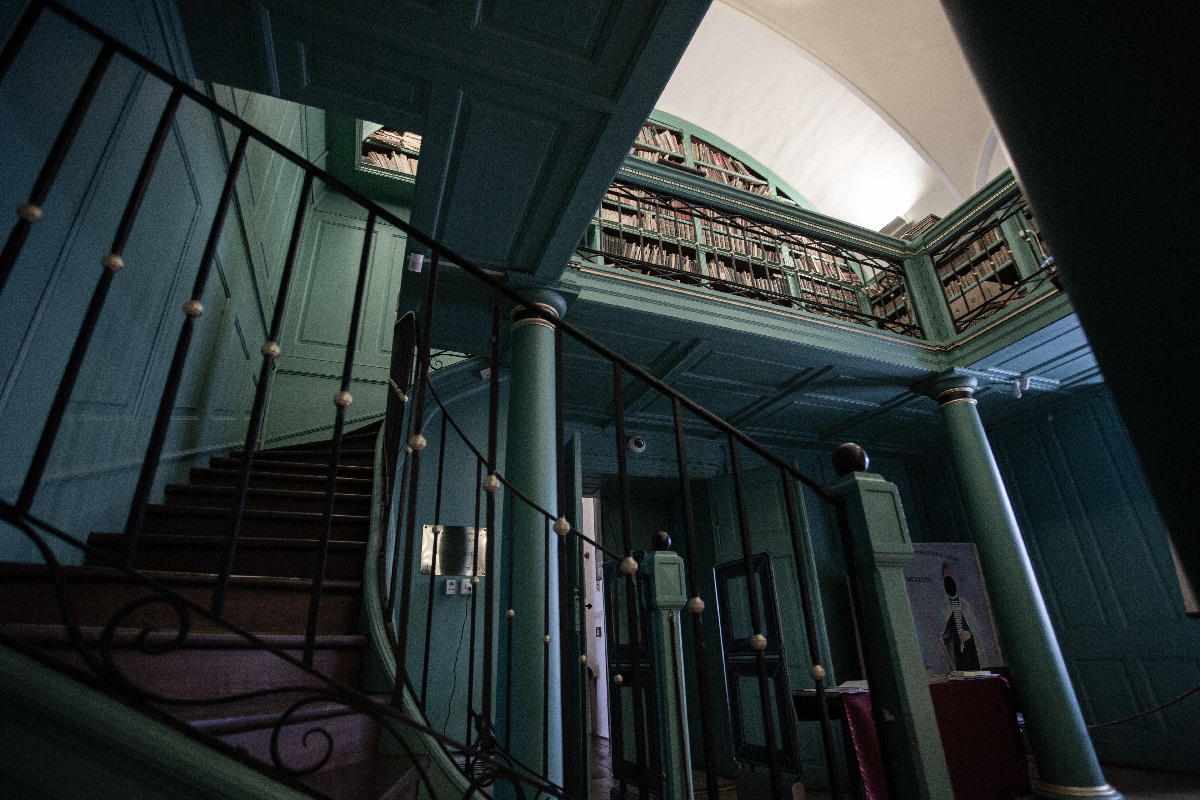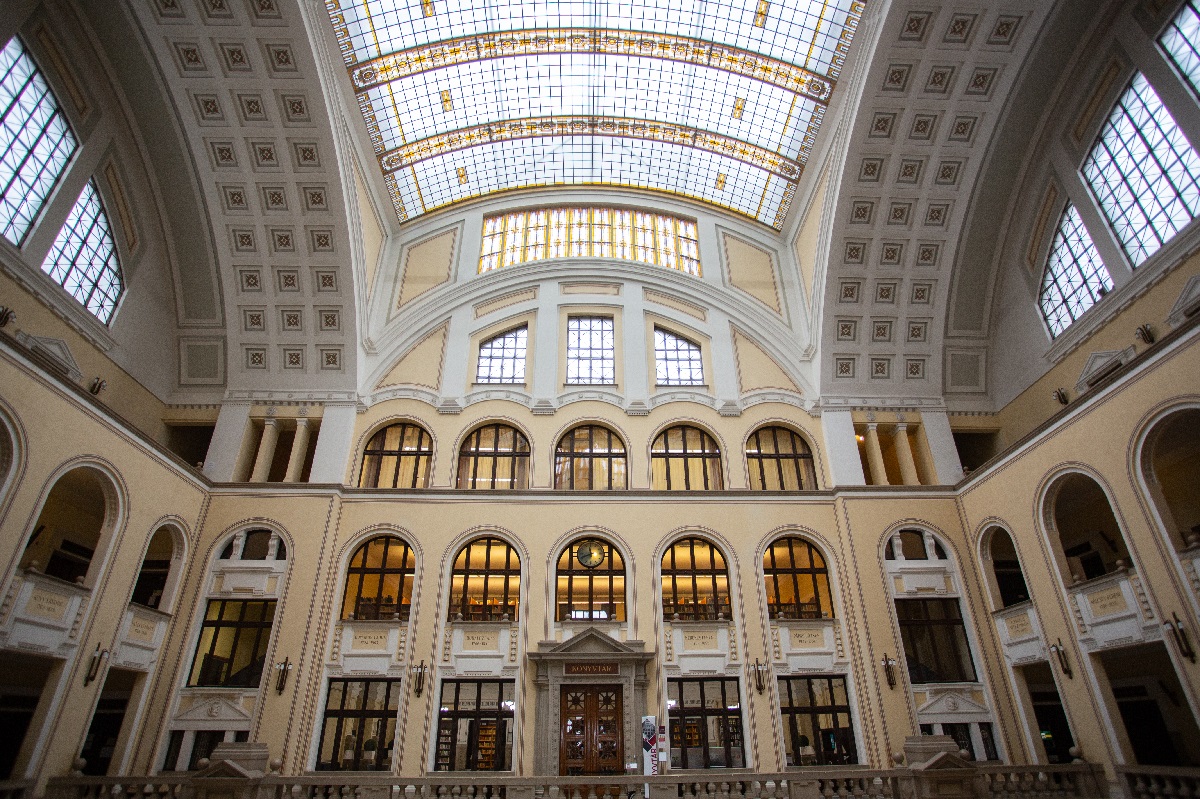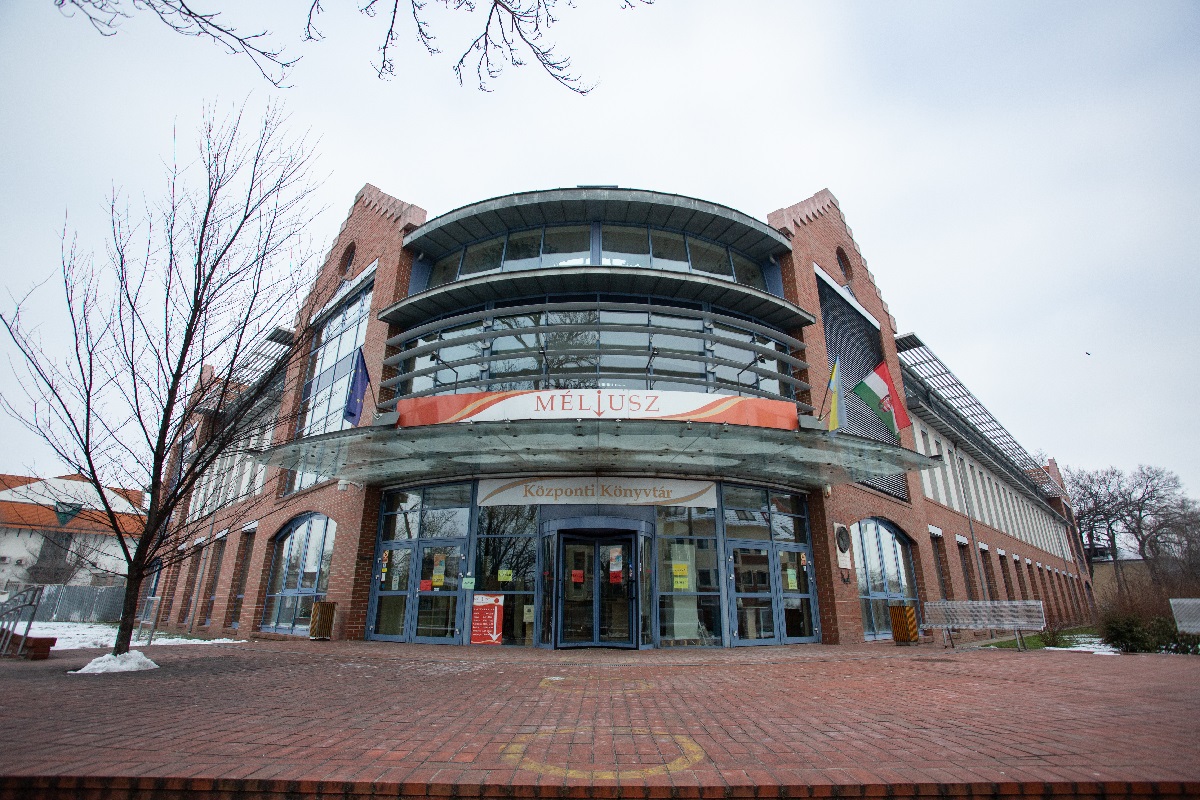Today’s Debrecen boasts various church-owned, university-owned, school and public libraries that have been in continuous operation for at least one but mostly for several centuries.
The Reformed College, established in 1538, has accumulated a substantial collection of documents throughout the ages. This is owing mainly to the peregrinating students, who, returning from their study trips abroad, brought back works of theology but also of science with the purpose of donating them to the library of their former school, so that a continually developing collection may be established, serving the cause of education. On the other hand, the College Library also owes its existence to the donations of patrons supporting the College and the College professors who around the mid-1700s launched a planned accumulation programme of all works scientific. This is why the collection today holds incunabula, folios, maps, old Hungarian certificates and manuscripts. Then, throughout the 19th and 20th centuries, professors’ estates and famous writers’ invaluable manuscripts – those of Mihály Csokonai Vitéz, Ferenc Kölcsey, János Arany, Endre Ady, Zsigmond Móricz -- all found their way into the collection of the Great Library.

The Library of the University of Debrecen has been open to readers in the main university building since 1933. The creation of the National Collection is coeval with the 1952 regulation on deposit copies. The Library adjusted its accumulation policy to the decree, highlighting the collection of museum documents, especially those published in or concerning Hungary, as well as publications and manuscripts of a local historical merit. This activity was carried out with the purpose of making accessible, to the greatest possible extent, the antecedents, too, of the post-1952 modern book industry harvest. To reward the persevering accumulation work, the library law of 1976 bestowed the title of national library on the library of the university then called Kossuth Lajos University. The National Collection is mostly found in the totality of the general collections of the seven specialised libraries, but certain groups of items of unique value demanding particular protection and services are held in special collections (the Periodical Collection, the Manuscript Collection, the Music Collection, the Poster Collection, the Incunabula Collection, various estate collections and the Collection of Standards, Patents and Corporate Literature). The central library on Egyetem Square holds books on humanities and sciences, literature, dictionaries, travel guides, and books on history, psychology, religion and philosophy as well as the Austria Collection. The library in Ótemető Street, in the building of the Faculty of Engineering, collects professional literature of the fields taught there and of related transdisciplinary fields. It holds special collections such as the Collection of Patents and Standards, the Hungarian Building Industry Catalogue and the Product Information Document Collection. The collection of the library on the Kassai Street Campus consists of books, dailies and weeklies and professional journals on political sciences and law, IT, economics and library studies. It houses the Manuscript Collection as well as the collection safekeeping important documents and artefacts from the history of the University of Debrecen. The Centre for Life Sciences houses a collection on medical sciences, biology, biophysics, biochemistry and chemistry, mathematics and geography. The Health Science Library joined the above on 1 January 2021.

The Municipal Council of the Royal Free City of Debrecen decreed the establishment of a Library of Community Culture in its general meeting of 12 December 1916. The library was created on 1 September 1917 and opened to the public on 1 August 1919. It was located on the premises of the Town Hall, then moved to the former School of Agriculture (2 Füvészkert Street). The collection was accumulated via state and municipal aid, family heirlooms, Frigyes Déri’s donations, and the merger of the collections of the four municipal public libraries closed by the Town Council. In 1930 it was moved to the newly opened Déri Museum. In 1951 the museum was brought under state ownership, but the library remained in operation in the building. On 21 December 1952 the county library was opened at 8 Piac Street, in the former offices of the Debreczen Academy of Commerce. Part of its collection was contributed by the Library of Community Culture. In 1966 the service of ‘professional information’ was organised, which is when the local history collection was established, too. In 1961 the Municipal Library was founded. In 2013 Debrecen’s Municipal Library and the Méliusz Juhász Péter Library were merged.

Debrecen is a city of learning with numerous primary and secondary schools. The establishment and growth of school libraries can be kept track of in school reports, which used to be printed annually until the late 1940s. These publications were mostly restarted in the late 1990s, accompanied by monographs on schools’ histories, including chapters on school libraries.
© debrecenliterature.hu All Rights Reserved Privacy Policy